There’s something about yellow plants that just makes a garden feel happier, isn’t there? That warm splash of color reminds us of sunshine, summer mornings, and fresh energy. Whether it’s a row of cheerful sunflowers standing tall or little marigolds lining a pathway, yellow plants have a way of instantly lifting the mood. If your garden feels a little dull, adding even a few golden blooms can turn it into a bright, welcoming space.
Here’s a list of five of the best yellow plants you can have in your garden.
Sunflower – The Tallest Yellow Plant for Cheerful Gardens

Sunflowers are the true icons of yellow plants. With their tall stems and bright golden faces, they bring instant joy and a warm summer feeling to any garden. These joyful giants follow the sun during the day, which makes them even more fascinating to watch. Easy to grow and full of life, sunflowers love plenty of sunlight and well-drained soil.
Not only do they look beautiful, but they also draw butterflies, bees, and even birds, which gives your outdoor area movement and vitality. If you want a garden that feels cheerful and full of sunshine, sunflowers are the perfect yellow plants to grow. And if you’d like to explore another vibrant option, check out our Dipladenia Planting Guide to add even more charm to your garden.
Watering needs:
Sunflowers love deep watering. Give them a good soak once a week so their roots grow strong. If there’s a lot of rain, reduce watering. The best results come when the soil stays slightly moist but never waterlogged.
Care Tips:
Sunflowers need 6–8 hours of sunlight every day. Plant them in loose, well-drained soil. If they grow too tall, support them with a bamboo stick or stake. A little balanced fertilizer in the early stages gives them a healthy boost.
Growing Season:
Sunflowers grow best in warm weather. Sow the seeds in early spring so that by summer they are tall and strong. They bloom beautifully through late summer, filling your garden with golden color.
Best Months to Grow Sunflowers:
Sow sunflower seeds in March to April (spring), so they bloom in June to August during summer.
Benefits of Sunflowers:
- Attract butterflies, bees, and birds.
- Seeds are a healthy snack and can be used for oil.
- Add bright summer vibes to the garden.
Uses of Sunflowers:
- Seeds for snacks or oil production.
- Flowers for bouquets and decoration.
- Stems can be used in creative crafts.
Marigold – A Yellow Plant That Brings Color and Protection
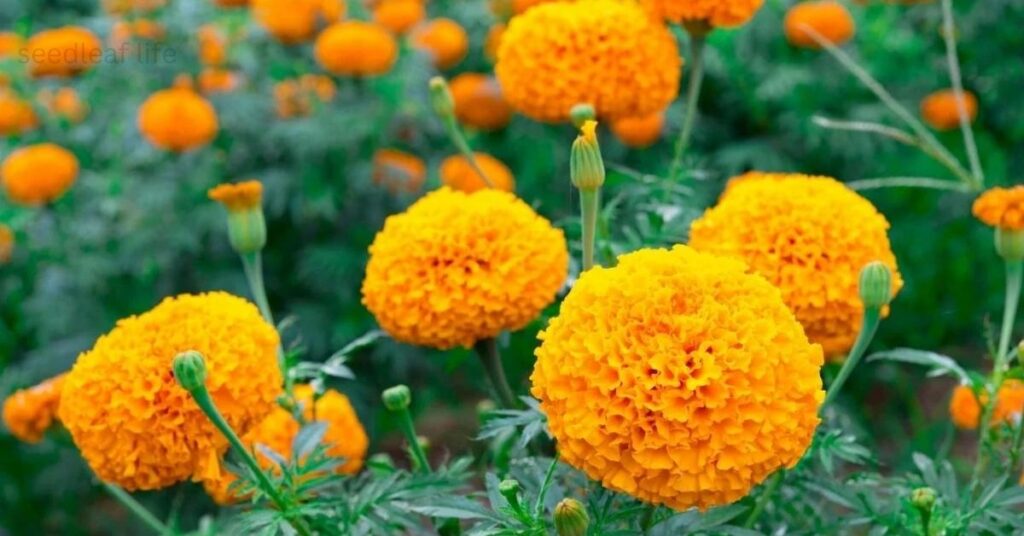
Marigolds may be small, but oh, the glow they bring! When you bend down to touch their petals, they feel almost velvety, and their bright yellow-orange color looks like tiny suns gathered in your garden. They bloom for such a long time that it feels like they never get tired of smiling.
The exciting part is that marigolds discreetly keep some pests out of your garden without you even realizing it. It’s like having little golden bodyguards that also make everything look more cheerful.
Watering Needs:
Marigolds like regular but light watering. Keep the soil slightly moist but never soggy. Yellow plants like marigolds grow best when watered at the base, keeping the leaves dry to avoid disease.
Care Tips:
These cheerful flowers love full sun and don’t need rich soil to thrive. Deadhead old blooms to encourage fresh ones, and give light fertilizer once a month. Among yellow plants, marigolds are also known to protect gardens from pests naturally.
Growing Season:
Marigolds bloom their best in the cooler months. Plant the seeds in October–November for winter flowers that last until spring. Adding these yellow plants to your garden during this time brings nonstop color and brightness.
Best Months to Grow Marigolds:
Marigolds grow best when planted in October to November for winter flowers, or in spring (February–March) for a long blooming season.
Benefits of Marigolds:
- Natural pest repellent in the garden.
- Long blooming season keeps gardens colorful.
- Very easy to grow, even for beginners.
Uses of Marigolds:
- Petals for natural dyes and skincare remedies.
- Used in garlands, festivals, and religious rituals.
- Perfect for garden borders and edging.
Daffodil – A Classic Yellow Plant for Spring
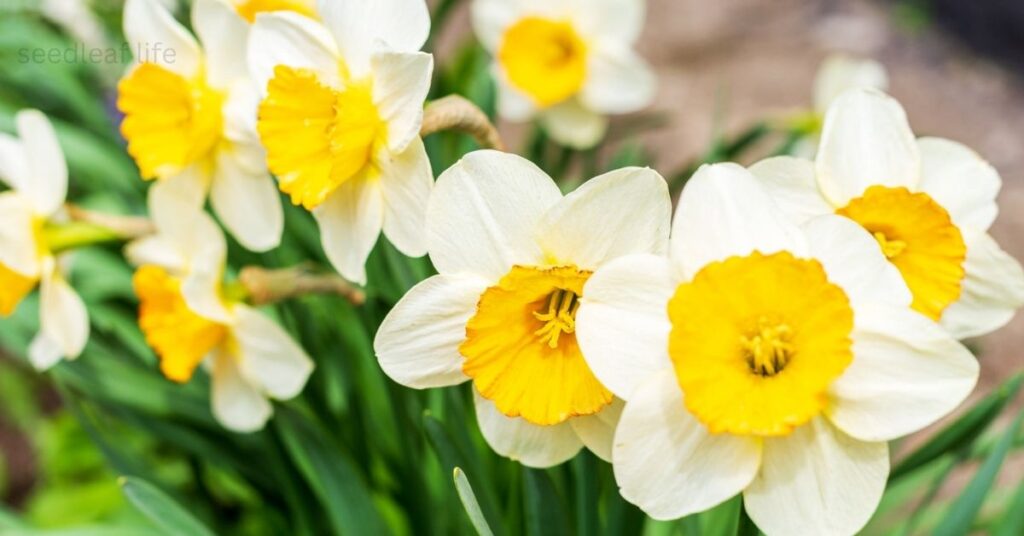
Daffodils are like nature’s way of saying, “Winter is over; it’s time to smile again.” When they pop out of the soil, they bring this fresh burst of yellow that feels like hope itself. If you touch their trumpet-shaped flower, it feels smooth and a little waxy, almost too perfect to be real.
Plant them once, and every spring they return like old friends who never forget to visit. Seeing a bunch of daffodils swaying in the breeze feels like a joyful welcome after the long cold months.
Watering Needs:
Daffodils prefer soil that stays slightly damp while they are growing and blooming. Give them regular water in spring, but slow down once the flowers begin to fade. Like other yellow plants, they dislike soggy roots, so drainage is important.
Care tips:
After flowering, allow the leaves to remain until they turn yellow and dry on their own. This helps the bulbs gather energy for next year. Every few years, lift and divide the bulbs to keep your daffodils—and your yellow plants collection – healthy and strong.
Growing Season:
Plant daffodil bulbs in fall, before the soil freezes, so they rest over winter. By early spring, they’ll push through the ground with bright yellow blooms. They’re among the most cheerful yellow plants, bringing hope and freshness after the cold months.
Best Planting Months for Daffodils:
Plant daffodil bulbs in September to November (fall) before the ground freezes; they bloom beautifully in February to March.
Benefits of Daffodils:
- Symbol of spring, renewal, and hope.
- Low-maintenance perennial that returns every year.
- Excellent cut flowers for vases and decor.
Uses of Daffodils:
- Popular in flower arrangements and gifting.
- Ideal for spring landscaping and borders.
- Adds seasonal charm to garden beds.
Black-Eyed Susan – A Hardy Yellow Plant for Long Blooms
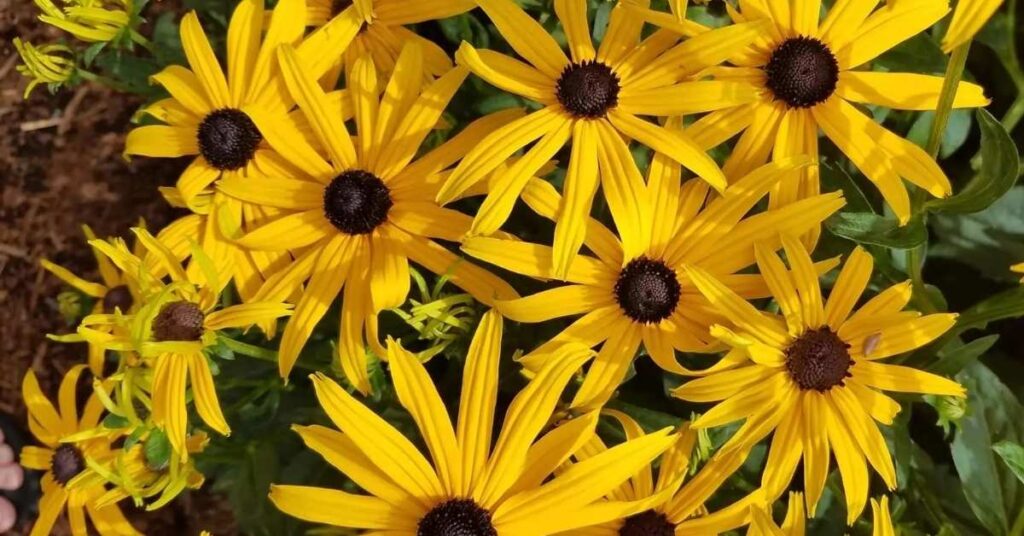
Black-Eyed Susan is one of those yellow plants that never fails to grab attention. With their bright golden petals and dark centers, they look like little suns scattered across the garden. These flowers are tough, easy to grow, and love the sunshine, which makes them perfect for both beginners and seasoned gardeners.
They also attract butterflies and bees, turning your garden into a lively, buzzing space. Blooming from summer into fall, Black-Eyed Susans keep the color going long after many other flowers fade.
Watering Needs:
These flowers prefer consistent moisture, especially during their first growing season. Water them deeply once or twice a week, allowing the soil to dry slightly between sessions. Like many yellow plants, they thrive in well-drained soil without standing water.
Care Tips:
Black-Eyed Susans love full sun and bloom longer when old flowers are trimmed away. Add a light layer of mulch around the base to keep the soil cool and moist. Among yellow plants, they are known for being hardy and low-maintenance.
Growing Season:
Plant them in spring after the last frost, and enjoy blooms that last from mid-summer to early fall. These yellow plants keep your garden colorful long after many other flowers fade, making them perfect for a lively outdoor space.
Best Months to Grow Black-Eyed Susans:
Plant in April to May after the last frost; enjoy golden blooms from July to September that last into early fall.
Benefits of Black-Eyed Susans:
- Attract butterflies, bees, and other pollinators.
- Hardy and drought-tolerant flower.
- Long bloom season from summer to fall.
Uses of Black-Eyed Susans:
- Perfect for wildflower gardens and meadows.
- Great for rustic floral arrangements.
- Adds natural charm to garden landscapes.
Forsythia – An Early-Blooming Yellow Plant for Hedges
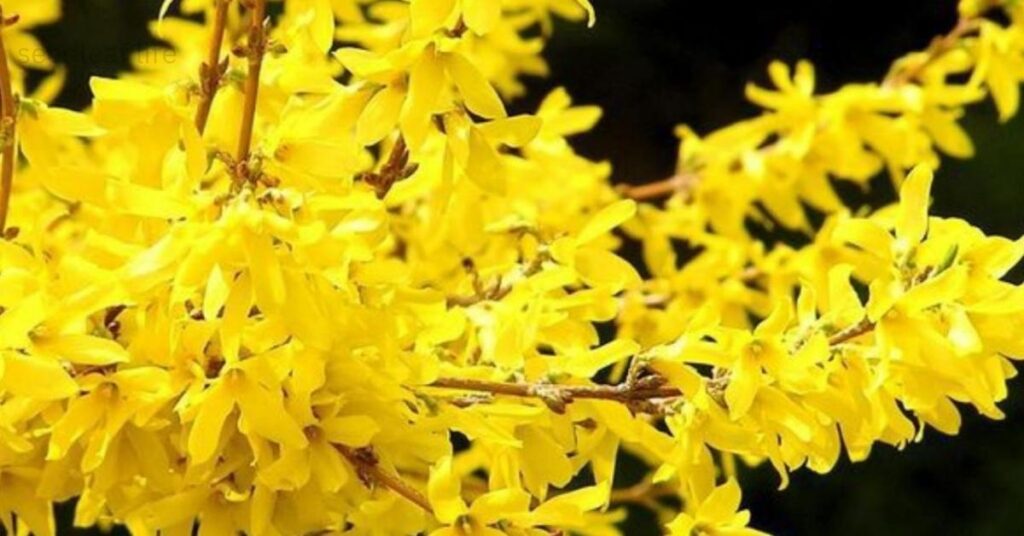
Forsythia is the plant that shouts, “Spring is here!” before anyone else does. Forsythia is a plant that resembles bare branches that blossom into a thousand tiny golden bells.
When you run your hand gently along a blooming branch, the flowers feel papery and soft, like they might float away. This shrub doesn’t just brighten your garden; it surprises you every year with its early bloom, filling the space with warmth just when you need it most.
Watering Needs:
Forsythia doesn’t ask for much water once it settles in. In the beginning, keep the soil lightly moist to help the roots spread. Later, it manages well on its own, needing only an occasional deep drink during very dry weather.
Care Tips:
Trim the branches right after the flowers fade — this keeps the shrub in shape and full of life. Forsythia enjoys soaking up the sun, but a little afternoon shade won’t bother it. Among yellow plants, it’s one of the easiest to manage with just a touch of compost each spring.
Blooming Season:
Forsythia is a true early riser — often the very first yellow plant to burst into bloom in late winter or the start of spring. Plant it in autumn or early spring, and you’ll be rewarded with golden branches when the rest of the garden is still waking up.
Best Months to Bloom Forsythia Yellow Plants
Forsythia bursts into bloom in late February to March, often before other plants wake up, making it one of the first signs of spring.
Benefits of Forsythia:
- One of the earliest spring bloomers.
- Fast-growing and perfect for hedges.
- Very low-maintenance and adaptable to soils.
Uses of Forsythia:
- Excellent for hedges and garden borders.
- Branches used in early spring decorations.
- Adds bright color to outdoor spaces before other plants bloom.
Conclusion
Yellow plants are more than just garden decorations — they are nature’s way of spreading joy, warmth, and positivity. From the tall and cheerful sunflower to the early-blooming forsythia, each yellow plant adds its own charm and brightness to your outdoor space.
Planting them not only brings beauty but also attracts butterflies, bees, and birds, filling your garden with life. If you want your garden to feel welcoming, happy, and full of sunshine, adding these beautiful yellow plants is the perfect choice.

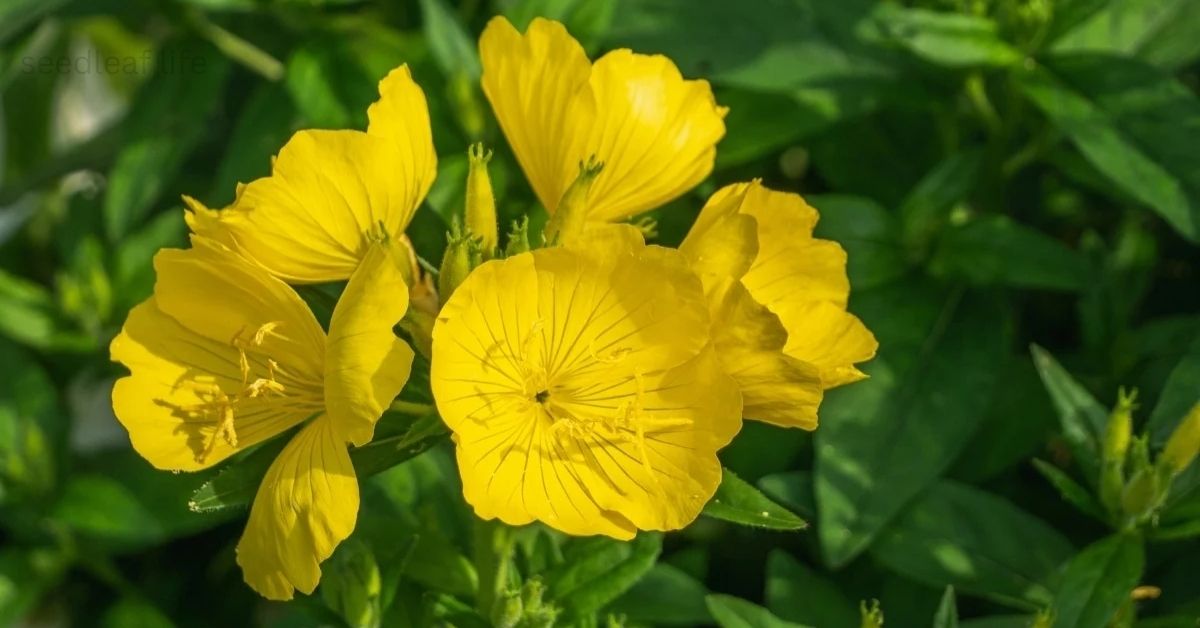
Leave a Reply
You must be logged in to post a comment.